Finding Inspiration In Everyday Life For Your Drawings
As an artist, finding inspiration can sometimes feel like searching for a needle in a haystack. However, the truth is that inspiration is all around us, waiting to be discovered in our daily lives. Whether you're sipping your morning coffee, walking in the park, or simply observing the hustle and bustle of city life, there are endless opportunities to ignite your creativity. This article explores various sources of inspiration found in everyday life, offering insights and techniques to enhance your drawing practice by observing the world around you.
Nature offers a wealth of inspiration for artists. From intricate leaf patterns to vibrant sunsets, exploring natural environments can ignite creativity and provide unique subject matter for your drawings. Imagine standing in a lush forest, the sun filtering through the leaves, casting playful shadows on the ground. Each element, from the tiniest flower to the grandeur of a mountain, tells a story waiting to be captured on paper. So next time you step outside, take a moment to truly observe your surroundings. What colors do you see? What shapes and forms catch your eye? Allow nature to inspire your artistic journey.
Cityscapes are rich with diverse elements, including architecture, people, and street life. Capturing the essence of urban environments can challenge your skills and broaden your artistic perspective. The dynamic energy of a bustling street, the intricate details of a historic building, or the quiet moment of a park bench can all serve as fantastic subjects for your drawings. Urban landscapes invite you to explore various techniques, from sketching the stark lines of skyscrapers to the fluid movements of pedestrians. Don't shy away from the chaos; instead, embrace it and let it fuel your creativity.
Incorporating street photography into your drawing practice can help you capture candid moments and expressions, providing a dynamic source of inspiration for character studies and urban scenes. Think of street photography as a treasure hunt; every shot you take is a glimpse into someone's life, a story waiting to unfold. By observing these moments, you can translate them into your artwork, breathing life into your characters. The beauty of street photography lies in its spontaneity, allowing you to capture raw emotions that can enrich your drawings.
Observing people in everyday situations can spark ideas for character development in your drawings, allowing you to infuse life and emotion into your artwork. Have you ever sat in a café, watching the world go by? Each person you see has their own story, their own struggles and joys. By paying attention to body language, facial expressions, and interactions, you can create characters that resonate with viewers. This practice not only enhances your observational skills but also deepens your understanding of human emotions, making your artwork more relatable.
Attending public events, such as festivals or markets, can offer a vibrant atmosphere filled with colors and interactions, serving as a fantastic backdrop for drawing inspiration. Imagine the lively sounds of laughter, the smell of delicious food, and the sight of colorful decorations. These experiences can spark your creativity and provide a plethora of subjects to draw. Capture the excitement of a festival or the tranquility of a farmer's market; both settings are teeming with inspiration just waiting to be translated onto your canvas.
Focusing on the unique architectural features of buildings can enhance your understanding of form and structure, leading to more compelling and detailed drawings. Each building has its own personality, from the ornate designs of historical structures to the sleek lines of modern architecture. By studying these details, you can improve your technical skills and develop a keen eye for proportion and perspective. Take your sketchbook on a walk through the city and challenge yourself to capture the essence of each building you encounter.
Common household items can serve as unexpected sources of inspiration. By experimenting with composition and perspective, you can create captivating still-life drawings from the mundane. Think about the beauty in simplicity—a bowl of fruit, a cup of tea, or even a stack of books can become a stunning subject with the right approach. Arrange these objects in unique ways, play with lighting, and observe how shadows dance across surfaces. This practice not only hones your skills but also encourages you to find beauty in the ordinary.
Exploring the textures and patterns of everyday objects can help develop your observational skills, allowing you to translate these details into your drawings effectively. Whether it's the roughness of a wooden table or the smoothness of a ceramic vase, each texture adds depth to your work. Use various drawing techniques to capture these qualities, experimenting with shading and line work to bring your subjects to life. By focusing on textures, you can elevate your drawings from simple representations to rich, tactile experiences.
Understanding how light interacts with objects can dramatically improve your drawing technique, enabling you to create depth and dimension in your artwork. Light can transform a flat drawing into a three-dimensional masterpiece. Experiment with different lighting conditions, such as the soft glow of morning light or the harsh shadows of midday. By observing how light affects color and form, you can add realism and drama to your work, making your drawings more captivating and engaging.
Drawing from personal experiences can provide a profound source of inspiration. Reflecting on memories and emotions can lead to powerful and meaningful artwork that resonates with viewers. Your unique perspective can shine through your art, making it a reflection of your journey. Whether it's a cherished memory from childhood or a recent travel adventure, these experiences can infuse your work with authenticity and depth.
Capturing memories from your travels can inspire drawings that reflect diverse cultures and landscapes, enriching your artistic repertoire with global perspectives. Each place you visit offers a new palette of colors, textures, and stories. Consider creating a series of sketches that document your travels—these can serve as both a visual diary and a source of inspiration for future projects. Let the world be your muse, and don't be afraid to explore different styles and techniques inspired by the places you visit.
Exploring your emotional states through drawing can serve as a therapeutic process, allowing you to express feelings and experiences creatively, leading to unique artistic outcomes. Art has the power to heal, and by channeling your emotions into your work, you can create pieces that resonate on a deeper level. Whether you're feeling joy, sadness, or everything in between, let your emotions guide your hand as you draw. This practice can lead to a more profound connection with your art and your audience.
- How can I find inspiration in my daily life? Inspiration can be found by observing your surroundings, whether it's nature, urban landscapes, or everyday objects.
- What are some techniques to enhance my observational skills? Practice drawing from life, experiment with different perspectives, and pay attention to details like light and texture.
- How can personal experiences influence my artwork? Personal experiences can add depth and authenticity to your work, making it more relatable to viewers.
- Is it beneficial to incorporate photography into my drawing practice? Yes, photography can help you capture moments and expressions that can be translated into your drawings.
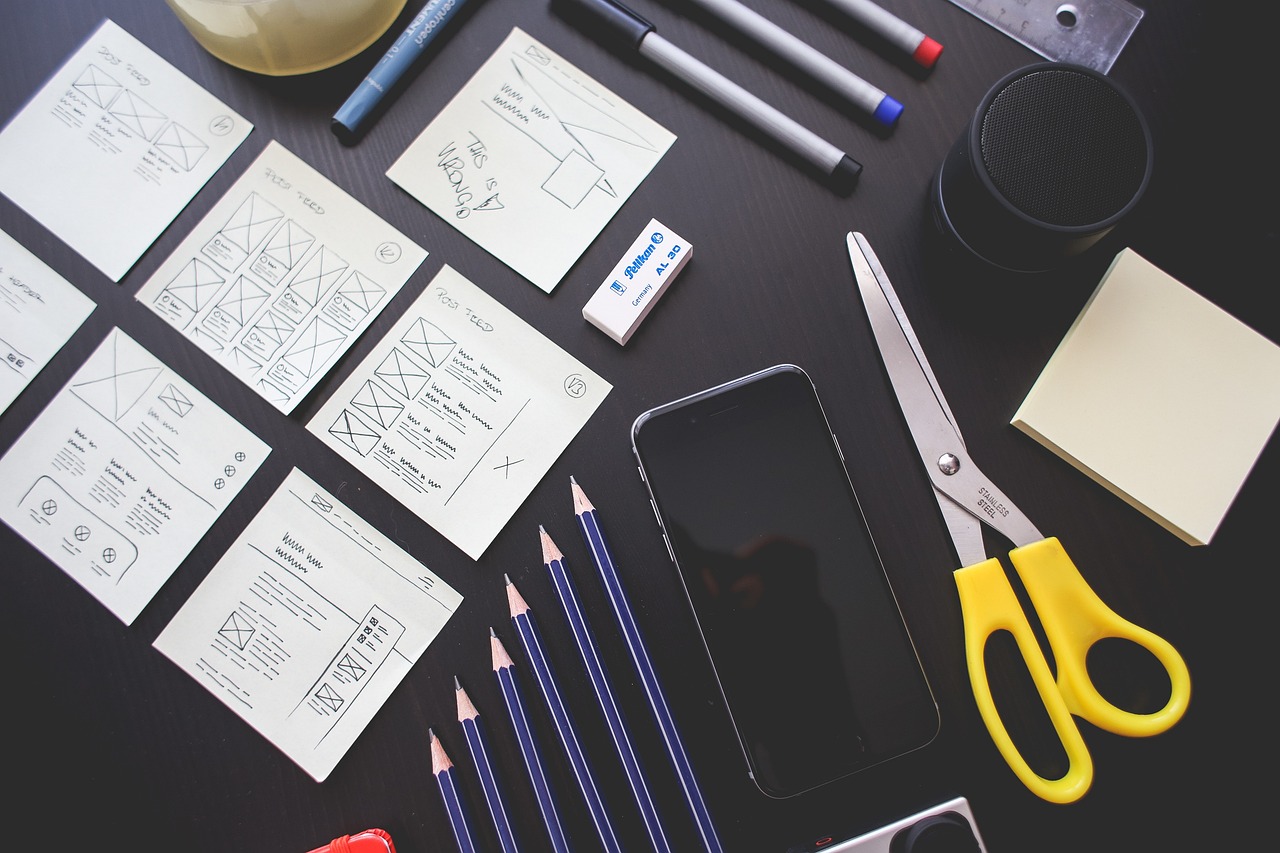
Observing Nature
Nature is like a treasure chest overflowing with inspiration, just waiting for artists to dive in and explore its depths. Have you ever taken a moment to really look at the intricate patterns on a leaf or the way sunlight dances on water? These seemingly simple elements can become the foundation of stunning artwork. When you step outside and immerse yourself in the beauty of your surroundings, you open yourself up to a world of creativity. Whether it’s the vibrant colors of a sunset or the delicate symmetry of a flower, nature offers a myriad of subjects that can ignite your imagination.
To truly observe nature, consider spending time in different environments. Each setting has its own unique vibe and visual elements. For instance, a tranquil forest might inspire soft, flowing lines, while a bustling beach could spark ideas for dynamic compositions filled with movement. Here are some ways to enhance your observational skills:
- Spend Time Outdoors: Make it a habit to go for walks in parks, gardens, or nature reserves. Bring your sketchbook along and capture what you see.
- Focus on Details: Instead of just sketching the overall scene, zoom in on specific elements like the texture of bark or the shape of clouds.
- Change Your Perspective: Try drawing from different angles. Lying on the ground or climbing to a higher vantage point can reveal new aspects of the same subject.
Additionally, consider creating a nature journal. This can be a fantastic way to document your observations, thoughts, and sketches. Not only does it help you practice your drawing skills, but it also encourages you to slow down and really appreciate the beauty around you. As you fill the pages with your findings, you’ll build a personal archive of inspiration that you can refer back to whenever you need a creative boost.
Moreover, don’t forget to pay attention to the changing seasons. Each season brings its own palette of colors and moods. In spring, the world is bursting with life and vibrant hues, while autumn offers a warm, earthy color scheme that can evoke feelings of nostalgia. By observing these seasonal changes, you can continually find fresh inspiration for your artwork. Remember, the key to drawing from nature is not just to replicate what you see but to interpret it through your unique artistic lens.
In summary, observing nature is an enriching practice that can significantly enhance your drawing skills. By immersing yourself in various natural settings, focusing on details, and keeping a nature journal, you can tap into an endless source of inspiration. So, the next time you step outside, take a moment to pause, breathe, and truly observe the beauty that surrounds you. You might just find that the world is more inspiring than you ever imagined!
- How can I start observing nature for inspiration?
Begin by spending time outdoors and taking a sketchbook with you. Focus on different environments and pay attention to details. - What should I include in my nature journal?
Document your observations, thoughts, sketches, and even photographs of what inspires you in nature. - How can I improve my observational skills?
Practice drawing from different angles, zoom in on details, and take your time to appreciate the beauty around you.
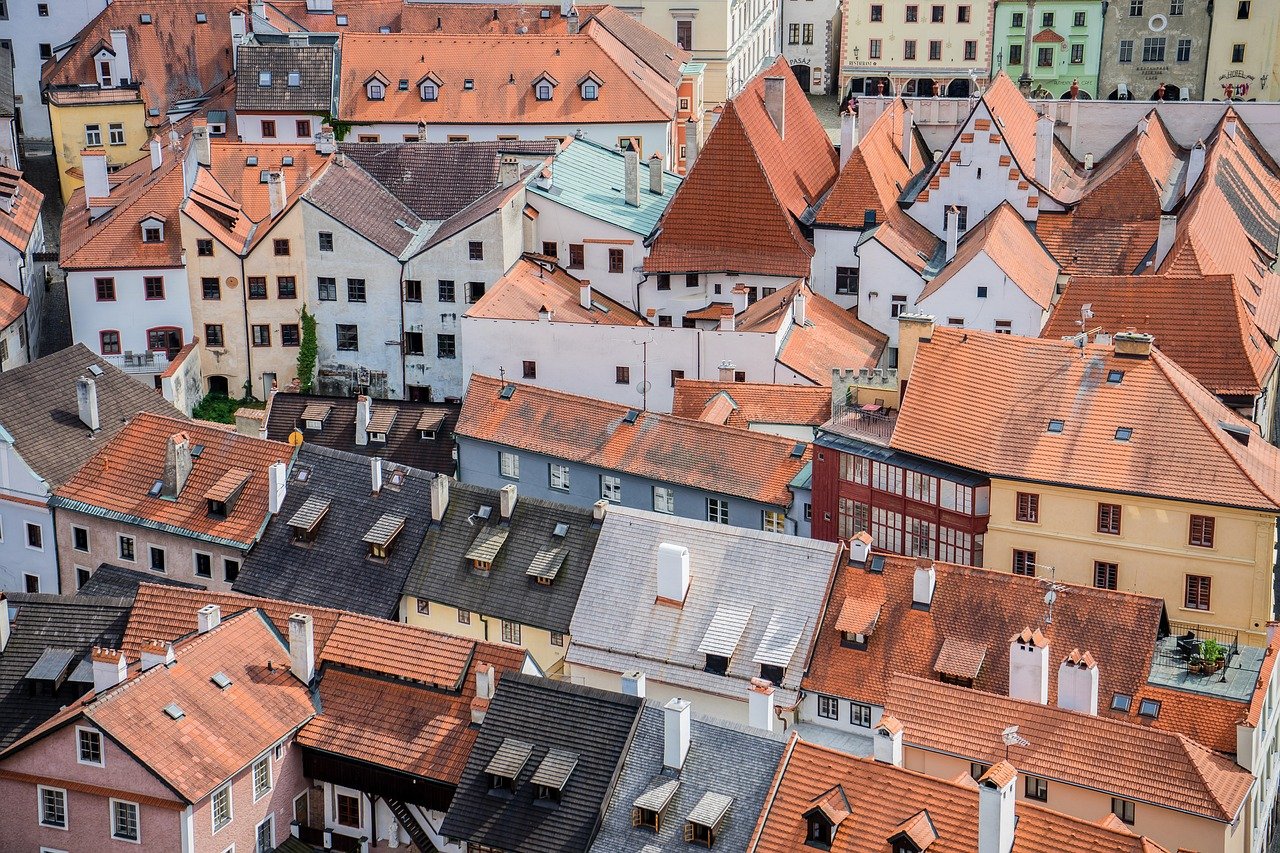
Urban Landscapes
When you think of , what comes to mind? The hustle and bustle of city life? The towering skyscrapers that seem to touch the clouds? Urban environments are a canvas of inspiration waiting to be explored. Each corner of a city tells a story, and as an artist, you have the unique opportunity to capture that narrative through your drawings. The blend of architecture, people, and street life creates a dynamic backdrop that can challenge your skills while broadening your artistic perspective.
Imagine strolling through a busy street market, where the air is filled with the aroma of street food, and vibrant stalls display an array of colorful goods. This rich tapestry of sights, sounds, and smells can ignite your creativity in unexpected ways. As you observe the interactions between vendors and customers, you might find inspiration for a new character or scene. The energy of urban life can be infectious, pushing you to translate that excitement onto your canvas.
One of the most rewarding aspects of drawing urban landscapes is the opportunity to incorporate street photography into your practice. By capturing candid moments and expressions, you can create a dynamic source of inspiration for character studies and urban scenes. Imagine sketching a group of friends laughing on a park bench or a street performer captivating an audience with their talent. These fleeting moments can be transformed into powerful illustrations that resonate with viewers.
In addition to people, the architectural details of buildings provide an endless source of inspiration. Pay attention to the unique features that make each structure stand out. From ornate facades to minimalist designs, every building has its own personality. By focusing on these details, you can enhance your understanding of form and structure, leading to more compelling and intricate drawings. Consider creating a series of sketches that highlight the different architectural styles found in your city, allowing you to explore the diversity of urban design.
As you embark on your artistic journey through urban landscapes, don’t forget to embrace the emotions that come with these experiences. People-watching is an excellent way to spark ideas for character development in your drawings. Observe how individuals express themselves in different situations—are they joyful, contemplative, or hurried? Infusing life and emotion into your artwork can create a deeper connection with your audience, inviting them to step into the world you’ve captured on paper.
Finally, attending public events such as festivals, parades, or local markets can serve as a fantastic backdrop for drawing inspiration. These gatherings are often filled with a vibrant atmosphere, bursting with colors and interactions. The energy of a lively event can be contagious, providing you with a wealth of material to draw from. Capture the essence of the moment in your sketches, whether it’s the joyful expressions of children playing or the intricate details of festival decorations. The stories you tell through your drawings will reflect the richness of urban life.
In conclusion, urban landscapes are a treasure trove of inspiration for artists. By immersing yourself in the city’s rhythm and observing the intricate details around you, you can unlock your creativity and develop your artistic skills. So grab your sketchbook and venture into the urban jungle—who knows what stories await you!
- What tools do I need for drawing urban landscapes? A sketchbook, pencils, pens, and perhaps some watercolors or markers for color can be great tools to start with.
- How can I improve my observational skills? Practice regularly by drawing from life. Spend time in different urban environments and challenge yourself to capture what you see.
- Is it necessary to include people in my urban landscape drawings? Not at all! While people can add life to your drawings, focusing on architecture or street scenes without figures can also create powerful images.
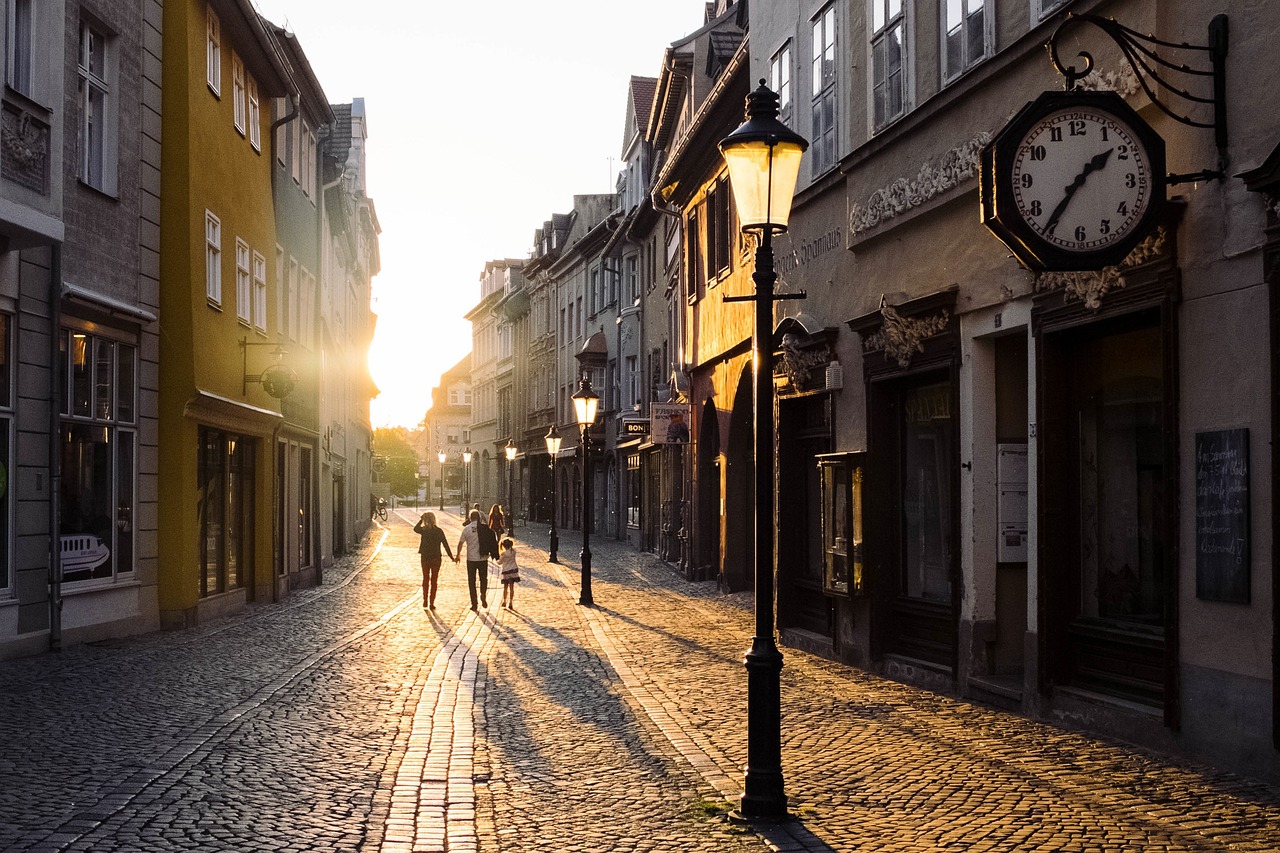
Street Photography
Street photography is an exhilarating way to capture the essence of urban life, and it can be a fantastic source of inspiration for your drawings. Imagine wandering through a bustling city, camera in hand, and suddenly spotting a moment that tells a story—perhaps a child laughing as they chase a pigeon, or an elderly couple sharing a quiet moment on a park bench. These candid scenes are not just photographs; they are vivid snapshots of life that can ignite your creativity and provide a wealth of material for your artistic endeavors.
When you engage in street photography, you're not just documenting what you see; you’re immersing yourself in the atmosphere of the environment. Each click of the shutter captures not only a moment but also the emotions and dynamics of the scene. This practice can help you develop a keen eye for detail and understand the interplay of light, shadow, and movement. By studying these elements, you can translate them into your drawings, enhancing your ability to portray life with authenticity.
One of the best aspects of street photography is its unpredictability. You never know what you might encounter around the next corner. This element of surprise can lead to unexpected inspiration. For instance, you might find a street performer passionately playing an instrument, or a group of friends sharing a laugh over coffee. These moments can serve as perfect references for character studies, allowing you to infuse your drawings with real-life emotions and stories.
To get started with street photography, consider these tips:
- Be Observant: Take your time to observe your surroundings. Look for interesting interactions between people or unique architectural features that catch your eye.
- Blend In: Try not to draw attention to yourself. The more unobtrusive you are, the more natural your subjects will behave.
- Experiment with Angles: Don’t be afraid to shoot from different perspectives. A low angle can make a subject seem larger than life, while a high angle can provide a unique overview of a scene.
By combining street photography with your drawing practice, you can create a rich tapestry of inspiration that reflects the vibrancy of everyday life. Whether you’re sketching a lively street scene or capturing the subtle nuances of a fleeting moment, the insights gained from observing and photographing the world around you will undoubtedly enhance your artistic skills.
Q: How can street photography improve my drawing skills?
A: Street photography helps you develop a keen eye for detail and an understanding of light and shadow, which are crucial for creating realistic drawings.
Q: Do I need a professional camera for street photography?
A: No, you can use any camera, including a smartphone. The key is to capture moments that inspire you.
Q: What should I focus on when taking street photos?
A: Look for interesting interactions, emotions, and unique compositions. Focus on capturing the essence of the moment.
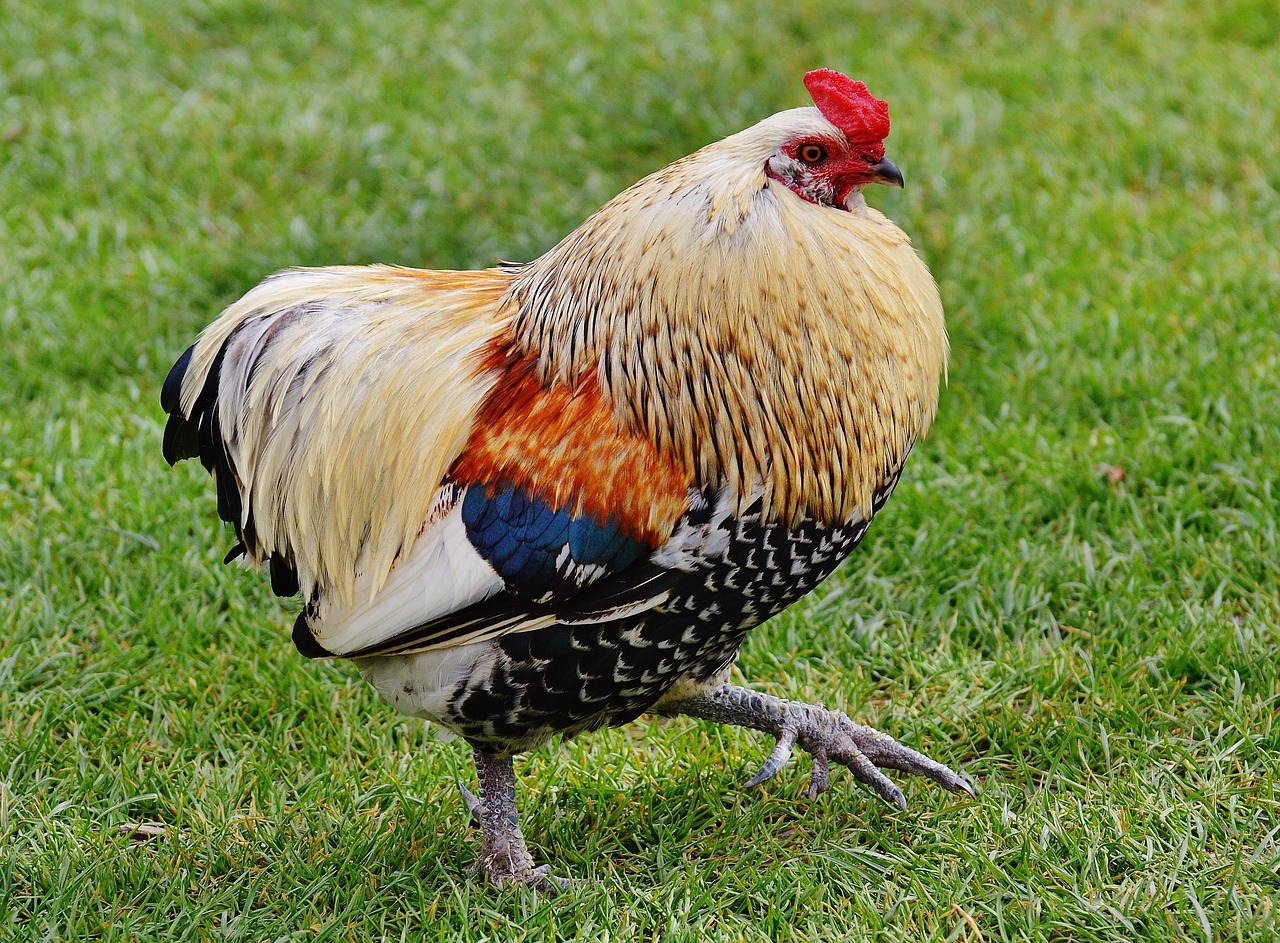
People Watching
People watching is more than just a leisurely pastime; it's a treasure trove of inspiration for artists looking to infuse life and emotion into their drawings. Imagine sitting in a bustling café or a serene park, observing the myriad of human expressions and interactions unfolding before you. Each person is a story waiting to be told, and with every glance, you can capture a moment that reflects the essence of humanity. This practice not only sharpens your observational skills but also helps you understand the subtleties of body language and facial expressions, which are crucial for creating compelling characters in your artwork.
As you immerse yourself in the world of people watching, consider these key aspects that can enhance your drawing practice:
- Expressions: Pay attention to the fleeting emotions on people's faces. A joyful smile, a furrowed brow, or a look of surprise can all serve as powerful references for your character studies.
- Interactions: Observe how individuals interact with one another. The dynamics of conversation, the gestures people use, and their physical proximity can all inspire unique compositions in your drawings.
- Diversity: Different cultures, ages, and lifestyles offer a rich tapestry of inspiration. Embracing this diversity can help you create more relatable and varied characters.
To make the most of your people-watching experience, try to find a comfortable spot where you can observe without being intrusive. Bring a sketchbook and let your pencil flow as you capture the essence of the people around you. You might be surprised at how quickly your sketches begin to reflect the vibrancy of life. Whether it's a couple sharing a laugh or a child lost in thought, each moment is an opportunity to explore the human experience through your art.
Incorporating people watching into your drawing routine can also serve as an excellent warm-up exercise. Start with quick sketches, focusing on capturing the gesture and movement rather than detailed features. This practice can help you loosen up and get into the creative zone. Over time, you'll find that your ability to convey emotion and character in your drawings will significantly improve, making your artwork resonate more deeply with viewers.
So, the next time you find yourself in a public space, take a moment to observe the world around you. You might just discover a wellspring of inspiration that transforms your approach to drawing, allowing you to create art that truly reflects the beauty and complexity of human life.
- What should I bring for people watching? A sketchbook and a pencil are essential. You may also want to bring a comfortable chair or blanket if you're planning to sit for a while.
- How do I overcome the fear of drawing people? Start with quick sketches to capture gestures and expressions without worrying about details. With practice, you'll build confidence.
- Can I use photographs instead of drawing from life? While photographs can be helpful, drawing from life enhances your observational skills and helps you capture the essence of movement and emotion.
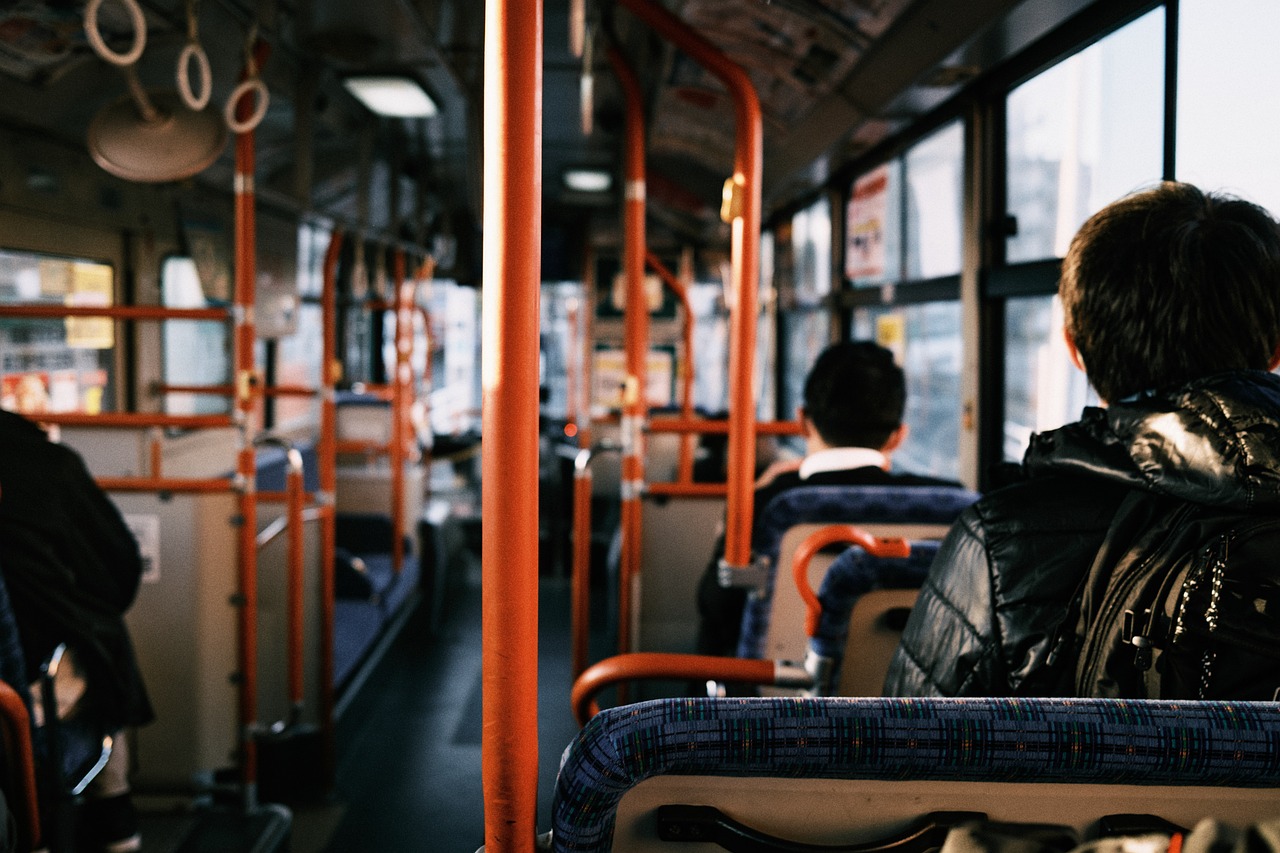
Public Events
Attending is like stepping into a vibrant tapestry of life, where colors, sounds, and emotions intertwine to create a feast for the senses. Whether it's a bustling street fair, a lively festival, or a local market, these settings are brimming with inspiration just waiting to be captured on paper. Imagine the kaleidoscope of faces you encounter, each telling a story, each moment bursting with energy. The atmosphere is electric, and as an artist, you have the unique opportunity to translate this dynamic environment into your drawings.
Think about it: how often do you find yourself surrounded by a diverse crowd, each person engaged in their own world? This is where the magic happens. You can observe interactions between people, the way they laugh, converse, or even just stand in silence, lost in thought. These candid moments can serve as the perfect foundation for character studies in your artwork. You might find inspiration in a child's wide-eyed wonder at a street performer or the serene smile of an elderly couple sharing a moment. Each scene is a snapshot of life that you can immortalize with your pencil or brush.
Moreover, the vibrant colors and unique settings of public events can invigorate your artistic palette. From the bright hues of festival decorations to the rich textures of local crafts, there's no shortage of visual stimuli. Consider how the interplay of light and shadow during different times of the day can transform the same scene. For instance, the golden hour just before sunset can cast a warm glow over everything, making it an ideal time to sketch the lively interactions and colorful displays around you.
As you immerse yourself in these events, don’t forget to take notes or quick sketches on the spot. This practice can help you remember specific details that might fade from memory later. You might jot down a few keywords or phrases that capture the essence of what you see, or even create quick thumbnail sketches to capture the composition and movement of the scene. This way, when you sit down to create a more polished piece later, you'll have a treasure trove of inspiration to draw from.
In essence, public events are a goldmine for artists seeking inspiration. They offer a unique blend of life, culture, and emotion that can elevate your drawing practice. So, grab your sketchbook, head out to the next event in your area, and let the vibrant world around you spark your creativity!
Q: How can I find public events to attend for inspiration?
A: Check local community boards, social media events pages, or websites dedicated to local happenings to find events in your area.
Q: What should I bring with me to sketch at public events?
A: A portable sketchbook, pencils, pens, or even watercolors are great tools to capture the essence of the event. Don't forget a comfortable seat or blanket!
Q: How do I overcome the fear of drawing in public?
A: Start by sketching small, quick studies to build your confidence. Remember, everyone is focused on their own experiences; most people won't notice you!
Q: Can I use photographs taken at public events for my drawings?
A: Absolutely! Photographs can serve as excellent references, especially if you want to capture details or moments that were too fleeting to sketch live.

Architectural Details
When it comes to drawing, can be a treasure trove of inspiration waiting to be uncovered. Think about it: every building tells a story, and each intricate design element contributes to that narrative. Whether it’s the delicate carvings on a historic facade or the sleek lines of modern skyscrapers, these details can significantly enhance your understanding of form and structure. By focusing on these elements, you not only improve your technical skills but also learn to appreciate the artistry involved in architecture.
Consider the way light interacts with different surfaces. The way shadows fall can completely transform the perception of a structure. For instance, the bricks of an old building can appear warm and inviting in the afternoon sun, while they may take on a more somber tone during twilight. This interplay of light and shadow can inspire you to experiment with your drawing techniques, allowing you to create depth and dimension that captures the viewer's eye.
Moreover, architectural details can serve as a fantastic exercise in observation. Look closely at the various components that make up a structure. You might be surprised at what you find! Here are some elements to pay attention to:
- Windows: The shape, size, and arrangement can tell you a lot about the style and era of the building.
- Doors: Often overlooked, doors can be focal points that add character and context.
- Balconies and Railings: These features can introduce intricate patterns and textures into your drawings.
- Rooflines: The silhouette of a building against the sky can be a striking element in your artwork.
Additionally, don’t forget about the surrounding environment. The way a building interacts with its landscape can provide context and enhance the overall composition of your drawing. For example, a charming cottage nestled in a lush garden can evoke feelings of warmth and nostalgia, while a towering office building in a bustling city can convey a sense of ambition and progress.
Incorporating architectural details into your drawings allows you to not only practice your skills but also to tell a story. Each line and curve can evoke emotions and provoke thoughts, making your artwork resonate more deeply with those who view it. So, grab your sketchbook and venture out into your city or town. You might just discover that the world around you is a canvas filled with architectural wonders just waiting to be captured on paper.
Q: How can I improve my drawing skills when focusing on architectural details?
A: Practice is key! Spend time sketching different buildings and their details. Focus on perspective, light, and shadow to enhance your understanding. Don't hesitate to experiment with various styles and techniques.
Q: What tools should I use for drawing architectural details?
A: You can start with basic tools like pencils and sketch paper. As you progress, consider using fine liners for details, charcoal for shading, or even digital tools if you prefer a modern approach.
Q: Is it important to understand the history of architecture to draw it?
A: While it's not essential, understanding architectural history can provide valuable context and inspiration. It can help you appreciate the design choices and styles that influence contemporary architecture.

Everyday Objects
When you think about inspiration, you might envision grand landscapes or bustling city scenes, but have you ever considered the beauty that lies within your own home? Everyday objects can serve as a treasure trove of inspiration for your drawings. From a simple coffee mug to the intricate design of a patterned rug, these ordinary items can transform into extraordinary subjects when viewed through the lens of creativity. The key is to look at them from different angles and perspectives, allowing your imagination to run wild.
One of the most fascinating aspects of drawing everyday objects is the opportunity to experiment with composition and perspective. By arranging items in unique ways, you can create captivating still-life compositions that tell a story. For instance, consider setting up a scene with:
- A vintage clock
- A stack of books
- A fresh bouquet of flowers
When you draw these objects together, you not only practice your skills but also explore how they interact with one another. The juxtaposition of shapes, colors, and textures can lead to stunning artwork that might surprise you.
Moreover, the textures and patterns found in everyday objects can enhance your observational skills significantly. Think about the smoothness of a ceramic vase or the rough texture of a wooden table. By focusing on these details, you can translate them into your drawings, adding depth and interest. This attention to detail can elevate a simple drawing into a piece that resonates with viewers.
Another aspect to consider is the play of light and shadow on these objects. Understanding how light interacts with different surfaces can dramatically improve your drawing technique. For example, a shiny apple will reflect light differently than a matte surface, creating various shades and highlights. By practicing with everyday objects, you can master the art of rendering light, bringing your drawings to life with dimension and realism.
In conclusion, everyday objects are often overlooked sources of inspiration for artists. They invite you to explore your creativity in new ways, challenge your skills, and deepen your understanding of form, texture, and light. So next time you're looking for inspiration, take a moment to observe the world around you—starting right at home!
Q: How can I find inspiration in everyday objects?
A: Look closely at the items around you, rearranging them to create interesting compositions. Pay attention to their textures, shapes, and how light interacts with them.
Q: What techniques can I use to draw everyday objects?
A: Experiment with different perspectives, focus on details, and practice capturing light and shadow to add depth to your drawings.
Q: Can drawing everyday objects enhance my overall drawing skills?
A: Absolutely! Drawing familiar items helps improve your observational skills, composition, and understanding of light, which are all essential for any artist.

Textures and Patterns
When it comes to drawing, are often the unsung heroes that can elevate your artwork from ordinary to extraordinary. Think about it: have you ever looked closely at the fabric of your favorite sweater? The intricate weave, the way the light plays off its fibers, and the subtle color variations can all serve as a rich source of inspiration. By honing your observational skills, you can capture these details in your drawings, transforming the mundane into something visually captivating.
One of the most exciting aspects of exploring textures is the sheer variety you can find in everyday life. From the rough bark of a tree to the smooth surface of a glass table, each texture tells its own story. When you start to notice these differences, you open up a whole new world of possibilities for your art. Imagine creating a still-life drawing where the contrasting textures of a shiny apple and a rough wooden table not only enhance the composition but also evoke a sensory experience for the viewer.
To effectively translate textures into your drawings, consider the following techniques:
- Observation: Spend time examining objects around you. Make a habit of taking a closer look at how light interacts with surfaces.
- Experimentation: Use different drawing tools and techniques to represent various textures. For instance, try using a stippling technique for rough surfaces or smooth shading for soft textures.
- Practice: Regularly sketch objects with distinct textures. This practice will sharpen your skills and help you develop your unique style.
Additionally, patterns can add a dynamic element to your artwork. Whether it's the repetitive design of a tiled floor or the swirling patterns of a marbled surface, incorporating patterns can create rhythm and movement in your drawings. Patterns can also serve as a fantastic background that complements the main subject of your artwork. For example, a floral pattern behind a portrait can evoke a sense of harmony and beauty, enhancing the overall composition.
Don't forget that textures and patterns can also be found in nature. Look at the delicate veins on a leaf or the intricate designs of a seashell. These elements can inspire you to create stunning, nature-themed drawings that resonate with viewers on a deeper level. The key is to keep your eyes open and be curious about the world around you. You never know when a simple texture or pattern might ignite your next creative spark!
Q: How can I improve my ability to observe textures and patterns?
A: The best way to enhance your observational skills is to practice regularly. Spend time sketching everyday objects, focusing on their textures and patterns. Try to capture the light and shadow that define these features.
Q: What materials are best for drawing textures?
A: Different materials can help you achieve various textures. Pencils, charcoal, and pastels are great for creating soft textures, while ink pens and markers can be used for more defined patterns. Experiment with different tools to see which ones work best for your style.
Q: Can I use digital tools to explore textures and patterns?
A: Absolutely! Digital drawing software often has features that allow you to create and manipulate textures and patterns easily. Experiment with brushes and filters to find unique ways to incorporate these elements into your artwork.
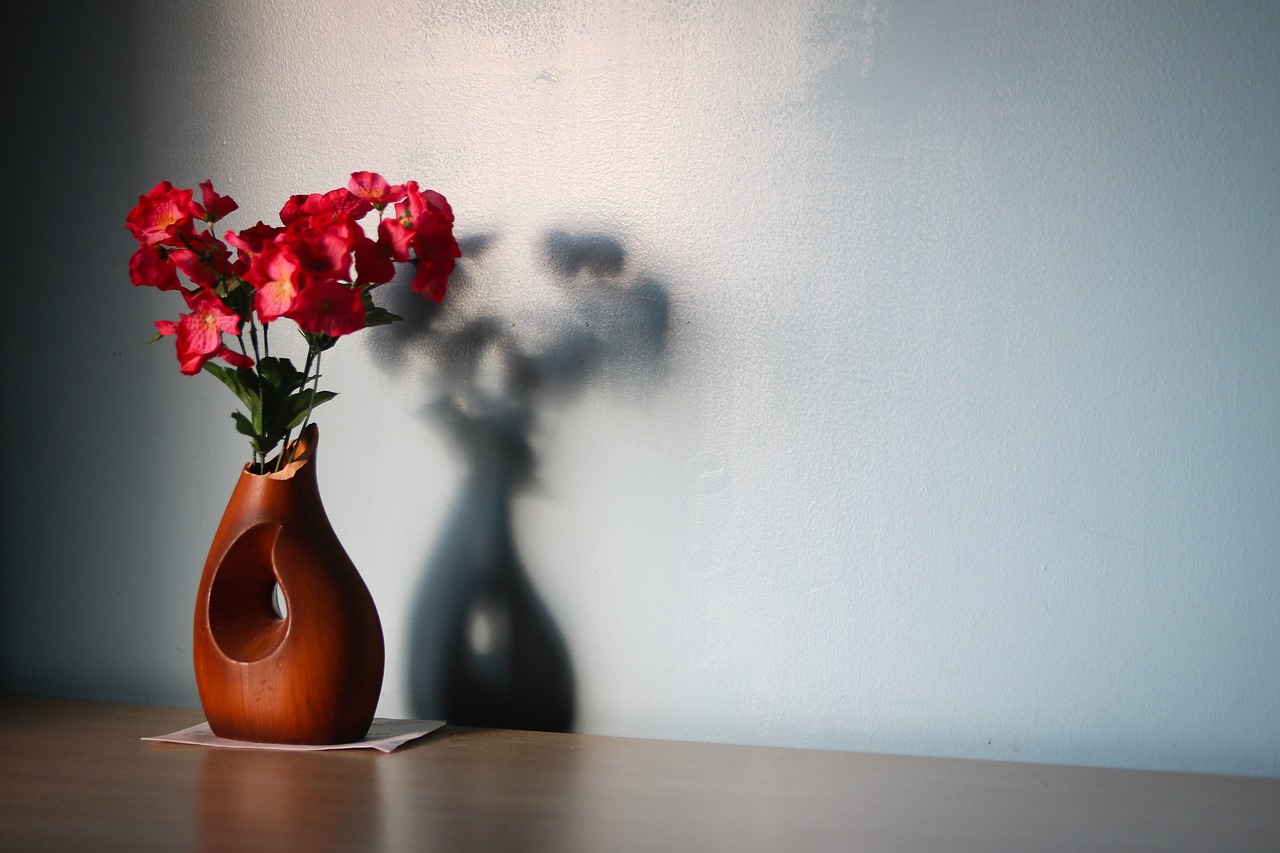
Light and Shadow
Understanding how light interacts with objects is crucial for any artist looking to elevate their drawing skills. Light and shadow are not just mere elements of a scene; they are the very essence that brings your artwork to life. When you observe how light falls on various surfaces, you start to notice the subtle variations that can transform a flat image into a three-dimensional masterpiece. Imagine standing in a sun-drenched room, where the sunlight streams through the window, casting intricate shadows on the floor. This interplay between light and shadow can serve as a profound source of inspiration for your drawings.
To effectively capture light and shadow in your artwork, consider the following techniques:
- Study the Source of Light: Identify where the light is coming from in your scene. Is it natural light from the sun or artificial light from a lamp? Understanding the source helps you determine how shadows will fall.
- Observe the Shadows: Take note of how shadows are formed. Are they soft and diffused, or harsh and defined? The quality of the shadow can change the mood of your drawing significantly.
- Use Contrast: High contrast between light and shadow can create drama in your artwork. Experiment with different levels of shading to see how it affects the overall composition.
Let’s break down the concept further. When you look at a simple object, like a bowl, the way light hits it can create various highlights and shadows. The highlight is where the light directly hits the surface, often the brightest spot, while the shadow is the area that receives little to no light, creating depth. By practicing these observations, you can add a level of realism to your drawings that captivates the viewer.
Here’s a quick table to illustrate the different types of shadows you might encounter:
| Type of Shadow | Description |
|---|---|
| Cast Shadow | The shadow that an object casts onto another surface, often defined and distinct. |
| Form Shadow | The gradual shading on the surface of an object itself, giving it volume. |
| Core Shadow | The darkest part of the form shadow, where the light is least effective. |
By incorporating these elements into your practice, you can create drawings that not only reflect the physical world but also evoke emotion and depth. Remember, light and shadow are your allies in the artistic journey—they can guide you in portraying the mood and atmosphere of your work. So, the next time you sit down to draw, take a moment to observe how light dances around your subject. It might just be the spark of inspiration you need to create your next stunning piece.
Q: How can I practice drawing light and shadow effectively?
A: Start by setting up a simple still life with a single light source. Observe how the light interacts with each object and practice sketching the different shadows and highlights you see.
Q: Do I need special materials to draw light and shadow?
A: While any drawing medium can work, using pencils with varying hardness can help you achieve a wider range of tones. Charcoal and pastels are also excellent for capturing the nuances of light and shadow.
Q: What are some common mistakes to avoid when drawing light and shadow?
A: One common mistake is not paying attention to the light source, which can lead to unrealistic shadows. Another is overemphasizing shadows without considering the highlights, which can flatten your drawing.

Personal Experiences
When it comes to drawing, one of the most profound sources of inspiration can be found in our own . Each of us carries a unique tapestry of memories, emotions, and stories that can fuel our creativity in remarkable ways. Think about it—every moment we've lived, every feeling we've felt, and every lesson we've learned shapes our perspective and influences our art. So, how can we tap into this rich reservoir of inspiration? Let's explore!
Reflecting on your past can lead to powerful artwork. For instance, consider the memories attached to a particular place or event. Maybe it's the serene beach where you spent summers as a child, or the bustling city streets you navigated during your travels. These memories can serve as vibrant backdrops for your drawings, allowing you to capture not just the visuals but the emotions tied to those experiences. When you draw from these memories, you're not just creating a piece of art; you're telling a story that resonates with both you and your audience.
Additionally, exploring your emotional states through drawing can be incredibly therapeutic. Art has a unique ability to express feelings that words sometimes cannot. Whether you're feeling joy, sadness, anger, or nostalgia, translating those emotions into your artwork can lead to unique and profound outcomes. For example, you might create a series of drawings that reflect different emotional states:
| Emotion | Visual Representation |
|---|---|
| Joy | Bright colors, dynamic shapes |
| Sadness | Muted tones, soft lines |
| Anger | Sharp angles, bold strokes |
| Nostalgia | Warm colors, vintage styles |
By allowing your emotions to guide your artistic choices, you can create pieces that are not only visually striking but also deeply resonant. Moreover, this process can foster a deeper connection with your viewers, as they often find solace in art that echoes their own feelings and experiences.
Lastly, don't forget about the impact of travel memories. Traveling exposes us to new cultures, landscapes, and experiences that can significantly broaden our artistic repertoire. When you capture the essence of a place you've visited, you bring back more than just a visual; you encapsulate the atmosphere, the sounds, the scents, and the emotions of that moment. This can inspire drawings that reflect the diversity of the world around us, enriching your portfolio with global perspectives. Imagine a drawing that combines the vibrant colors of a Moroccan bazaar with the tranquil blues of a Mediterranean coastline—such combinations can lead to stunning, imaginative works.
In conclusion, personal experiences are a treasure trove of inspiration waiting to be explored. By tapping into your memories, emotions, and travels, you can create art that is not only visually compelling but also deeply meaningful. So, grab your sketchbook and start reflecting on your own life—there's a world of inspiration just waiting for you to draw it out!
- How do I start drawing from personal experiences?
Begin by reflecting on significant memories or emotions. Jot down your thoughts and let them inspire your sketches. - Can drawing help with emotional healing?
Absolutely! Many artists find that expressing their feelings through art serves as a therapeutic outlet. - What if I don't have any travel experiences to draw from?
No worries! Everyday life is filled with inspiration. Look around your home, community, or nature for ideas.

Travel Memories
Traveling is not just about visiting new places; it’s a tapestry of experiences, emotions, and stories that can serve as a wellspring of inspiration for your drawings. Every destination you explore adds a unique thread to your creative fabric, enriching your artistic expression. Think about that breathtaking sunrise you witnessed over a mountain range or the bustling market filled with vibrant colors and sounds. These moments can be translated into your artwork, allowing you to share your journey with others.
When you draw from your travel memories, you’re not just recreating a scene; you’re capturing the essence of a moment. Each sketch can evoke the feelings you experienced—be it the thrill of standing in front of a historic monument, the tranquility of a serene beach, or the excitement of exploring a lively city. To harness this inspiration effectively, consider keeping a travel sketchbook. This can be a place where you jot down your thoughts, doodle quick sketches, or even paste in mementos like ticket stubs and postcards. This way, you can revisit those memories whenever you feel stuck or uninspired.
Here are some tips to help you draw from your travel memories:
- Focus on Details: Pay attention to the small details that make a place unique. Perhaps it’s the intricate patterns of tiles in a Moroccan bazaar or the way sunlight filters through leaves in a tropical forest.
- Capture Emotions: Think about how you felt during your travels. Was it joy, nostalgia, or wonder? Channel these emotions into your drawings to create a deeper connection with your audience.
- Experiment with Styles: Use your travel experiences to experiment with different artistic styles. For example, you might try a loose, impressionistic style to capture the essence of a bustling street scene.
Moreover, drawing from travel memories allows you to explore diverse cultures and landscapes, enriching your artistic repertoire. You can create a series of drawings that reflect the various places you’ve visited, showcasing how each location influenced your artistic development. This not only provides a visual diary of your adventures but also invites viewers into your world, allowing them to experience your journeys through your eyes.
In conclusion, travel memories are a powerful source of inspiration, offering a wealth of ideas and emotions to draw upon. By reflecting on your experiences and translating them into your artwork, you can create pieces that resonate with both you and your audience. So next time you embark on a journey, remember to keep your sketchbook handy—your next masterpiece might just be waiting to be born from the magic of your travels!
Q: How can I effectively capture my travel memories in drawings?
A: Start by keeping a travel sketchbook to jot down thoughts and quick sketches. Focus on details, emotions, and experiment with different styles based on your experiences.
Q: What should I include in my travel sketchbook?
A: Include sketches, notes on your experiences, photographs, ticket stubs, and any other mementos that inspire you or remind you of your journey.
Q: Can travel drawings help improve my artistic skills?
A: Absolutely! Drawing from real-life experiences helps improve observational skills, enhances creativity, and encourages experimentation with different techniques and styles.
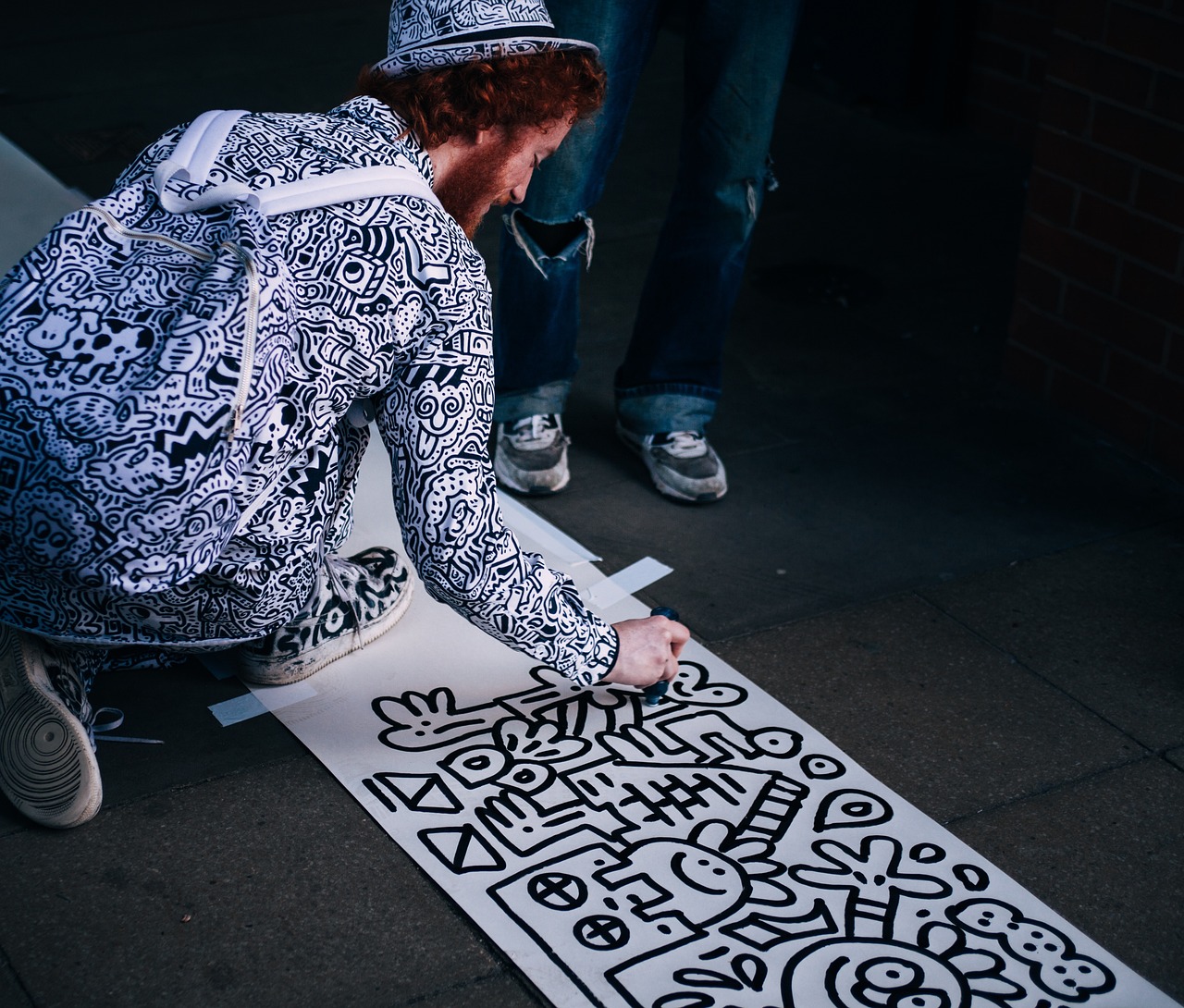
Emotional States
When it comes to art, the we experience can be some of the most powerful sources of inspiration. Think about it: have you ever been in a mood that just begged to be expressed on paper? Whether it’s joy, sadness, anger, or serenity, our emotions can fuel creativity in ways that are both profound and transformative. By channeling these feelings into your drawings, you not only create art but also embark on a personal journey of self-discovery.
One of the most compelling aspects of drawing from emotional states is the ability to convey feelings that words often fail to express. Imagine a moment of pure bliss; how would you translate that into your artwork? The colors you choose, the lines you draw, and even the subjects you depict can all reflect your inner emotional landscape. For example, a vibrant explosion of colors might represent joy, while darker hues could signify melancholy. This connection between emotion and artistic expression can create a resonance with viewers, allowing them to feel what you felt at that moment.
Moreover, using your emotions as a foundation for your artwork can serve as a therapeutic outlet. When you put pencil to paper, you might find that your feelings begin to unravel. Drawing can be a form of meditation, a way to process complex emotions and experiences. It’s like having a conversation with yourself, where each stroke of the pencil is a word, and each shading is a sentence. You can explore themes such as:
- Joy: Bright colors and dynamic compositions can represent happiness.
- Sadness: Soft lines and muted tones might convey feelings of loss.
- Anger: Sharp, jagged edges and intense colors can express frustration.
- Serenity: Gentle curves and pastel shades can evoke a sense of calm.
Additionally, drawing from personal emotional experiences can lead to unique artistic outcomes that resonate deeply with viewers. For instance, a drawing inspired by a moment of heartbreak might evoke empathy or nostalgia in someone who has experienced similar feelings. This shared emotional connection can make your artwork more impactful and relatable.
To enhance your exploration of emotional states, consider keeping a sketchbook dedicated to your feelings. Use it as a safe space to express whatever is on your mind, whether it’s doodles that reflect your mood or more detailed pieces that delve into complex emotions. Over time, you’ll likely notice patterns in your work that reveal how your emotional states influence your artistic style and choices.
In conclusion, harnessing your emotional states as a source of inspiration can lead to powerful and evocative artwork. By embracing your feelings and allowing them to guide your creative process, you can produce drawings that not only express your inner world but also resonate with others on a profound level. So, the next time you're feeling something intense, don’t shy away from it—grab your sketchbook and let those emotions flow onto the page.
Q: How can I start drawing based on my emotions?
A: Begin by identifying what emotions you want to express. Use colors, shapes, and lines that resonate with those feelings and allow your creativity to flow without judgment.
Q: Is it necessary to show my emotional drawings to others?
A: Not at all! Your sketchbook is a personal space. Share your work only when you feel comfortable, and remember that the process of creating is what truly matters.
Q: Can drawing help with emotional healing?
A: Yes! Many artists find that drawing helps them process their emotions and experiences, providing a therapeutic outlet for self-expression.
Frequently Asked Questions
- What are some ways to find inspiration for my drawings?
Inspiration can be found everywhere! Start by observing nature—the colors, shapes, and patterns can spark your creativity. Urban landscapes also offer a wealth of inspiration, from architecture to the hustle and bustle of street life. Don't forget to engage in people watching or attend public events to capture the essence of everyday moments!
- How can everyday objects inspire my artwork?
Everyday objects are often overlooked, but they can be incredible sources of inspiration. By experimenting with composition and perspective, you can transform mundane items into captivating still-life drawings. Pay attention to the textures and patterns of these objects, as they can enhance your observational skills and add depth to your work.
- Why is observing light and shadow important for drawing?
Understanding how light interacts with objects is crucial for creating depth and dimension in your drawings. It helps you depict realism and adds a dynamic quality to your artwork. By practicing how to capture light and shadow, your drawings will come to life, making them more engaging for viewers.
- Can personal experiences influence my art?
Absolutely! Drawing from your personal experiences can lead to powerful and meaningful artwork. Reflecting on memories, emotions, or travel adventures can enrich your artistic repertoire and resonate deeply with your audience. It's a way to express yourself and connect with others through your art.
- How do I incorporate travel memories into my drawings?
Travel memories can be incredibly inspiring. Try to capture the essence of different cultures and landscapes through your drawings. Use photographs, sketches, or even written notes from your travels as references. This will not only enhance your skills but also broaden your artistic perspective.
- Can drawing help me express my emotions?
Yes, drawing can be a therapeutic process that allows you to explore and express your emotional states. Whether you're feeling joyful, sad, or contemplative, translating these feelings into art can provide a unique outlet for self-expression and creativity.



















